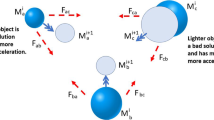Abstract
Support vector machine (SVM), partial least squares (PLS), and Back-Propagation artificial neural network (ANN) were employed to establish QSAR models of 2 dipeptide datasets. In order to validate predictive capabilities on external dataset of the resulting models, both internal and external validations were performed. The division of dataset into both training and test sets was carried out by D-optimal design. The results showed that support vector machine (SVM) behaved well in both calibration and prediction. For the dataset of 48 bitter tasting dipeptides (BTD), the results obtained by support vector regression (SVR) were superior to that by PLS in both calibration and prediction. When compared with BP artificial neural network, SVR showed less calibration power but more predictive capability. For the dataset of angiotensin-converting enzyme (ACE) inhibitors, the results obtained by support vector machine (SVM) regression were equivalent to those by PLS and BP artificial neural network. In both datasets, SVR using linear kernel function behaved well as that using radial basis kernel function. The results showed that there is wide prospect for the application of support vector machine (SVM) into QSAR modeling.
Similar content being viewed by others
References
Cortes, C., Vapnik, V., Support vector networks, Machine Learning, 1995, 20(3): 273–293.
Flach, P. A., On the state of the art in machine learning: A personal review, Artificial Intelligence, 2001, 131(1): 199–222.
Zhang, X. G., Introduction to statistical learning theory and support vector machine, Acta Automatica Sinica, 2000, 26(1): 32–42.
Sanchez, A. V. D., Advanced support vector machines and kernel methods, Neurocomputing, 2003, 55(1): 5–20.
Chaucharda, F., Cogdillb, R., Rousselc, S. et al., Application of LS-SVM to non-linear phenomena in NIR spectroscopy: development of a robust and portable sensor for acidity prediction in grapes, Chemom. Intell. Lab. Syst., 2004, 71(2): 141–150.
Hua, S., Sun, Z., A novel method of protein secondary structure prediction with high segment overlap measure:support vector machine approach, J. Mol. Biol., 2001, 308(2): 397–407.
Burbidge, R., Trotter, M., Buxton, B. et al., Drug design by machine learning: support vector machines for pharmaceutical data analysis, Computers and Chemistry, 2001, 26(1): 5–14.
Hong, S. J., Weiss, S. M., Advances in predictive models for data mining, Pattern Recognition Letters, 2001, 22(1): 55–61.
Belousov, A. I., Verzakov, S. A., Frese, J. V., A flexible classification approach with optimal generalization performance: support vector machines, Chemom. Intell. Lab. Syst., 2002, 64(1): 15–25.
Cai, Y. D., Feng, K. Y., Li, Y. X. et al., Support vector machine for predicting α-turn types, Peptides, 2003, 24(4): 629–630.
Gaoa, J. B., Gunnb, S. R., Harrisb, C. J., SVM regression through variational methods and its sequential implementation, Neurocomputing, 2003, 55(1): 151–167.
Mei, H., Zhou, Y., Li, S. Z. et al., A new set of amino acid descriptors and its application in peptide QSARs, Biopolymers (Pept. Sci.) 2005, DOI 10.1002bip.20296.
Golbraikh, A., Tropsha, A., Beware of q2!, J. Mol. Graphics Mod., 2002, 20(4): 269–276.
Tropsha, A., Gramatica, P., Gombar, V. K., The importance of being earnest: validation is the absolute essential for successful application and interpretation of QSPR models, QSAR Comb. Sci., 2003, 22(1): 69–77.
Gramatica, P., Pilutti, P., Papa, E., Validated QSAR prediction of OH tropospheric degradation of VOCs: splitting into training-test sets and consensus modeling, J. Chem. Inf. Comput. Sci., 2004, 44(5): 1794–1802.
Collantes, E. R., Dunn, W. J., Amino acid side chain descriptors for quantitative structure activity relationship studies of peptide analogues, J. Med. Chem., 1995, 38(14): 2705–2713.
Hellberg, S., Eriksson, L., Jonsson, J. et al., Minimum analogue peptide sets (MAPS) for quantitative structure-activity relationships, Int. J. Pept Protein Res., 1991, 37(5): 414–424.
Author information
Authors and Affiliations
Corresponding author
About this article
Cite this article
Mei, H., Zhou, Y., Liang, G. et al. Support vector machine applied in QSAR modelling. Chin.Sci.Bull. 50, 2291–2296 (2005). https://doi.org/10.1007/BF03183737
Received:
Accepted:
Issue Date:
DOI: https://doi.org/10.1007/BF03183737




